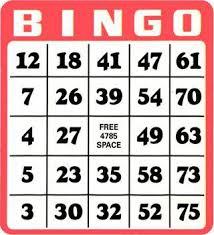Invisible Products; Death of your New Sales Goal
It’s that time of the year again with sales plans being launched and new commission plans being distributed. Meetings have occurred, financial modes built and presentations to the board done and the year’s sales plan was approved. Unfortunately, a number of teams will fail to achieve sales goals (often again) because their products and services are invisible to potential buyers.
I met with an entrepreneur who called and asked if I could help in fixing his sales problem. We met and after I asked him a number of questions I quickly understood what he described as “needing to fix sales his sales problem”.
Symptoms of the problem were described as;
- failure to achieve new product sales goals on the last three new product launches
- failure to grow new accounts, “it’s like my team is running a bread route”
- 0nly 40% of sales team achieved their sales goal last year
- We lost one of our top accounts we have sold for 12 years
- We lost two of our top salespeople in the last 3 years
- I failed to hit the numbers I promised our board
Well I can understand why we were meeting…however what happened next was even more disturbing,… he went on to share how he felt I needed to fix the sales problem:
- Sales Training – my guys need sales training, they need to sell through buyer objections
- Time Management – they need to spend more time calling on new accounts
- Compensation– we need to change our comp plan to there is more of an incentive to sell new products
- People– I have been trying to put this off but I probably should hire a VP of Sales to herd these cats.
- Product Training – we need to do a better job of training our sales people on products features and benefits
- Process – I want a defined repeatable sales process , sales forecasts have been a joke , I need to know production can count on the sales forecast we give them
This is always interesting ….a hard driving entrepreneur calls and asks to meet with me, and they share their problems then proceed to tell me how to fix them. (I would love to just once have the courage to say; “If you know the problems and how to solve them…why did you call me? “ ) Now I know how my doctor must feel when my right knee is acts up. As opposed to just sharing my symptoms and where it hurts, I proceed to share how other doctors have fixed my right knee since tearing my ACL years ago and explain how he probably should go inside my knee and clean up the cartilage, drain some fluid and probably give me a prescription for pain and an anti-inflammatory… (Sorry doc).
I agreed to help with one condition; I would meet with buyers in his market, his salespeople, and we would regroup to make sure we have an accurate understanding of the “why’s” the above symptoms are occurring (clearly understand the real problem) and then develop a corrective action plan, a roadmap to achieving his teams sales plan.
What we found were a number of what the entrepreneur believed to be true were areas we could improve, however the leading reason why his sales team was not achieving plan, particularly new product sales was his products were invisible to his market’s buyers in the process buyers were using to search for solutions to problems they were having. This team’s web site was basically a virtual brochure that talked more about who they were and not the problems they solved for their marketplace. With 70%-80% of they buying process being done prior to potential buyers calling one of his salespeople, competitors had much more influence on buyers early on, helping them shape how they believed they needed to solve the problems they were experiencing. His salespeople were being invited to quote much later in the sales process as “one of three competitive quotes required to keep their preferred vendor honest.”
When I shared this market information his first response was…”this may be true with consumer B2C products but not B2C customers.” However when I shared specific account interview notes with buyers he was much more open to discussing his web strategy. I shared that your products need to be found when buyers are doing their homework. Once a potential buyer finds your site you have a minute to win it as I discussed in a previous post. I connected him with a web SEO expert I have used in the past and helped him interview web site developers to address this root invisible problem in the heart of his marketing.
How about your products? Are they invisible to potential buyers?
If you conduct a Google search, right now, are your products found? (go ahead minimize this blog right now and search. I can wait…type in an inquiry in the form of you looking for a solution to a problem; do not use your product brand name)
Are your products found on the first page?
Was there more than one entry found for your products?
As you look at the page, if you were a buyer who would you think is the market leader in solving the problem you were searching?
Are there any case studies or customer feedback? Any for your product?
Companies spend millions designing and developing new products but often fail to invest in marketing. In the above example this entrepreneur spends on average $280,000 in new product design and molds, another $27,000 in new brochures and a few trade ads, $9,000 for a booth and attending his industries’ trade show, and he had a friend of the family who did web sites on the side do his web marketing?
This entrepreneur had a sales team committed to achieving sales goals. Could they use some product and sales training? ….yes. Should we modify the current compensation plan to reward new product and new customer sales? …agreed. Should we work on designing a repeatable sales process based on how buyers were buying…absolutely! However if we take the time to do what I call “the market work”, his real problem was a marketing problem and not a sales problem. His biggest problem to solve that would produce the quickest sales return on investment was his web marketing. His web site had not been optimized, to the best of his knowledge…ever.
Products listed on web sites in the form of virtual brochures are invisible to buyers desperately search to solve urgent problems they have and must be solved and are basically the death of your sales plan . Yes you can have your salesperson’s cold call until the dogs come home, but why not invest in your digital salesperson and start conversations with buyers much sooner in the sales process.









